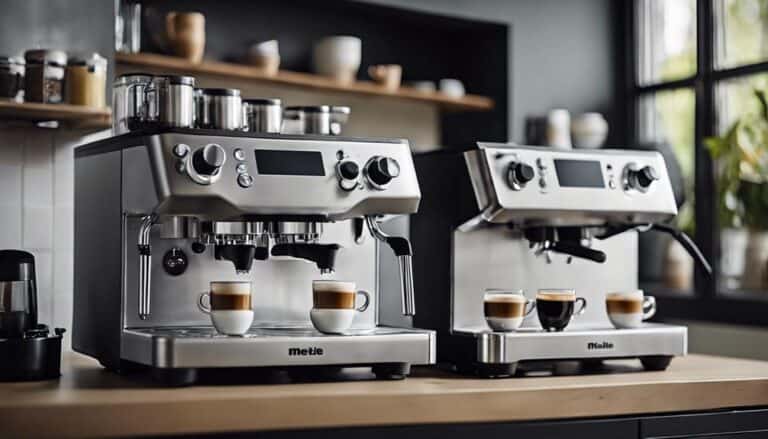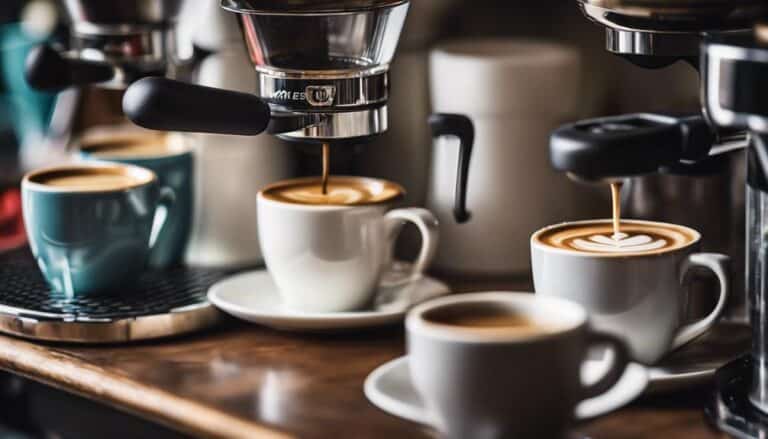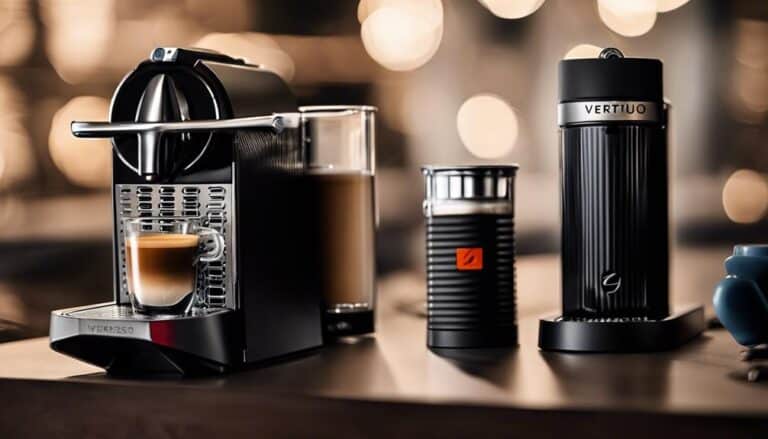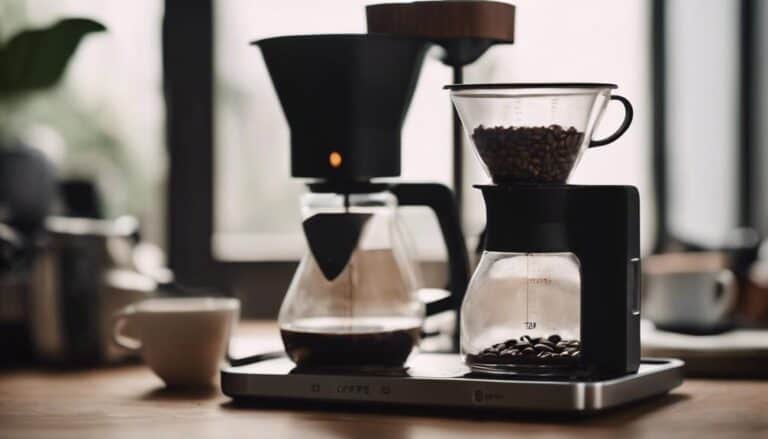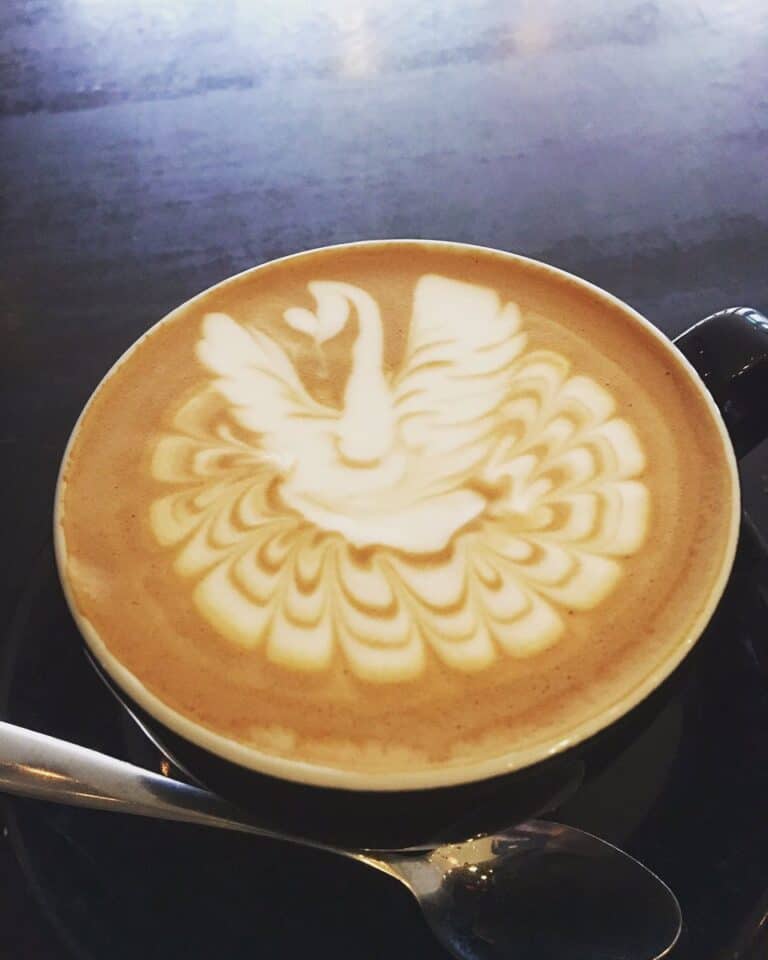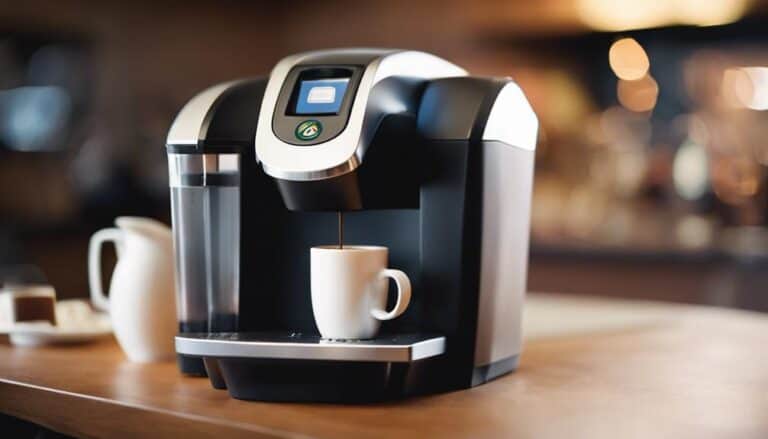How Much Coffee for 12 Cups of Coffee: A Clear Answer

When it comes to making coffee for a crowd, one of the most common questions is how much coffee for 12 cups. While it may seem like a simple question, there are a few factors to consider to ensure that you get the perfect pot of coffee every time. In this article, we will explore the different methods for measuring coffee and water to make 12 cups of coffee, and provide tips for adjusting the recipe to suit your personal taste preferences.

One of the most important factors to consider when making coffee for a group is the coffee to water ratio. This ratio determines the strength and flavor of your coffee, and can make a big difference in the final result. While there are a variety of ratios that can be used, a general rule of thumb is to use 1-2 tablespoons of coffee for every 6 ounces of water. This means that for 12 cups of coffee, you will need between 24-48 tablespoons of coffee, or 1 1/2 to 3 cups of coffee grounds. However, it’s important to note that this ratio can be adjusted based on personal taste preferences, so feel free to experiment with different ratios to find the perfect balance of strength and flavor.
Another important factor to consider is the type of coffee maker you are using. Different coffee makers may require different amounts of coffee and water, so it’s important to consult the manufacturer’s instructions or measurement chart to ensure that you are using the correct ratio. For example, a standard 12-cup drip coffee maker may require 11 tablespoons of coffee and 12 cups of water to make 12 cups of coffee, while a French press may require a different ratio to achieve the desired strength and flavor. By taking these factors into account, you can ensure that you make the perfect pot of coffee every time, whether you’re making it for a crowd or just for yourself.
Understanding Coffee-to-Water Ratio
When brewing coffee, the coffee-to-water ratio is a crucial factor that determines the strength and flavor of the resulting brew. The ratio refers to the amount of coffee grounds used in relation to the amount of water used to brew the coffee.
A commonly recommended ratio is the “golden ratio,” which suggests using two tablespoons of coffee grounds per every 8 ounces of water. For example, to brew 12 cups of coffee, which is approximately 60 ounces of water, we would need around 20 tablespoons of coffee grounds. However, it’s important to note that the golden ratio is just a guideline and can be adjusted based on personal preference.
One way to ensure accurate measurements is to use a digital kitchen scale to weigh the coffee grounds and water. This method is more precise and can provide consistent results. However, if you don’t have a kitchen scale, you can use tablespoons as a measurement. One tablespoon of coffee is approximately 5 to 7 grams, and for 12 cups, you’ll need around 11 to 16 tablespoons of coffee.
To make it easier to remember, you can use the following table as a reference:
| Number of Cups | Coffee Grounds (in tablespoons) |
|---|---|
| 4 | 5-7 |
| 6 | 8-10 |
| 8 | 10-12 |
| 10 | 13-15 |
| 12 | 16-18 |
Another helpful tool is the coffee to water ratio calculator, which can provide accurate measurements based on the desired strength of the coffee. The calculator takes into account the type of brewing method, the amount of coffee, and the amount of water. This tool can be especially useful for those who want to experiment with different brewing methods and ratios.
In summary, understanding the coffee-to-water ratio is essential to achieving the perfect cup of coffee. Whether using the golden ratio, a digital kitchen scale, or a coffee to water ratio calculator, accurate measurements are key to brewing a consistent and delicious cup of coffee.
The Importance of Coffee Beans
When making coffee, the type and quality of coffee beans used can greatly affect the taste and overall enjoyment of the beverage. It is essential to use fresh beans that are of high quality to achieve the best results.
There are two main types of coffee beans: Arabica and Robusta. Arabica beans are generally considered to be of higher quality and have a smoother, more complex flavor profile. Robusta beans, on the other hand, are known for their higher caffeine content and more bitter taste.
The origin of the coffee beans can also play a significant role in their taste and quality. Different countries and regions produce coffee beans with distinct flavor profiles, such as fruity or nutty notes. It is important to consider the origin of the beans when selecting them for your coffee.
When it comes to the type of coffee beans, it is a matter of personal preference. Some people prefer a light roast, while others enjoy a darker, more robust flavor. It is important to experiment with different types and roasts of coffee beans to find the one that best suits your taste.
In summary, the type, quality, freshness, and origin of coffee beans all play a crucial role in the taste and overall enjoyment of coffee. It is essential to use fresh, high-quality beans and experiment with different types and roasts to find the perfect cup of coffee.
Grind Size and Its Impact
When it comes to brewing coffee, grind size plays a critical role in determining the quality of the final product. The grind size affects the rate at which water extracts flavors from the coffee grounds, and thus, it affects the strength and taste of the coffee.
Different brewing methods require different grind sizes. For instance, a French press requires a coarse grind, while an espresso machine requires a fine grind. A drip coffee maker typically requires a medium grind, while pour-over and Chemex require a medium-fine grind. Aeropress, on the other hand, requires a fine grind.
A coarse grind is necessary for a French press because it allows the coffee to steep for a longer time, resulting in a stronger and bolder flavor. A fine grind is required for espresso because the water is forced through the coffee grounds at high pressure, and a fine grind ensures that the water extracts the maximum flavor from the coffee.
In a drip coffee maker, a medium grind is ideal because it allows the water to pass through the coffee at a steady rate, ensuring that the coffee is neither too weak nor too strong. A medium-fine grind is necessary for pour-over and Chemex because it allows the water to extract the coffee’s flavors at a controlled pace, resulting in a balanced and smooth taste.
An Aeropress requires a fine grind because it uses pressure to extract the coffee’s flavors, and a fine grind ensures that the water passes through the coffee grounds with ease, resulting in a clean and crisp taste.
In summary, the grind size is crucial in determining the quality of the coffee. We must use the appropriate grind size for each brewing method to achieve the desired taste and strength.
Choosing the Right Brewing Method

When it comes to brewing coffee, there are many methods to choose from. Each method has its own unique characteristics that affect the taste, strength, and aroma of the coffee. We’ll discuss some of the most popular brewing methods and their pros and cons to help you choose the right one for your 12 cups of coffee.
Drip Coffee Maker
The drip coffee maker is one of the most popular brewing methods for its convenience and ease of use. It uses a paper filter to brew coffee, which removes any sediments and oils from the coffee. The brewing time and temperature are controlled by the machine, allowing for consistent results. However, the coffee produced by a drip coffee maker can lack the depth and complexity of other brewing methods.
French Press
The French press is a manual brewing method that uses a plunger to press the coffee grounds to the bottom of the pot. It allows for a longer brewing time and a higher brewing temperature, resulting in a full-bodied and flavorful coffee. However, it requires more effort and attention to detail than a drip coffee maker, and the coffee can be more prone to sediment and oils.
Pour-Over Coffee
Pour-over coffee is a manual brewing method that uses a cone-shaped dripper and a paper filter to brew coffee. It allows for precise control over the brewing time and temperature, resulting in a clean and bright coffee. However, it requires a bit more skill and practice to master, and the process can be time-consuming.
Espresso
Espresso is a concentrated and strong coffee that is brewed under high pressure. It requires a specialized machine and finely ground coffee beans. Espresso is a versatile brewing method that can be used as a base for many coffee drinks. However, it can be expensive and requires more skill and knowledge to operate the machine properly.
Cold Brew
Cold brew is a brewing method that uses cold water to extract the coffee flavor over a long period of time. It produces a smooth and less acidic coffee that is perfect for iced coffee drinks. However, it requires a longer brewing time and a specialized container to brew in.
In conclusion, choosing the right brewing method for your 12 cups of coffee depends on your personal preference, time, and skill level. We hope this guide has helped you understand the pros and cons of some of the most popular brewing methods.
How Much Coffee for 12 Cups
When it comes to brewing coffee for a large group, it’s essential to know how much coffee to use to get the perfect taste. The amount of coffee needed for 12 cups depends on the coffee-to-water ratio, which you can adjust according to your preference.
A general rule of thumb is to use 2 tablespoons of coffee per 8 ounces of water. Based on this ratio, we would need approximately 9 tablespoons of coffee for 12 cups of coffee. However, this is just a starting point, and you can adjust the ratio to suit your taste.
If you prefer a stronger brew, you can increase the amount of coffee used. For instance, a 1:14 ratio would require 10 tablespoons (2.5 ounces or 75 grams) of ground coffee for 12 cups. On the other hand, if you prefer a lighter brew, you can use a 1:18 ratio, which would require 6 to 7 tablespoons (115 to 150 grams) of ground coffee.
Another way to measure coffee is by scoops. A standard coffee scoop is approximately 2 tablespoons, which means you would need 18 scoops for 12 cups of coffee using the 2 tablespoons per 8 ounces ratio. However, depending on the size of your scoop, this measurement may vary.
It’s also important to note that the size of the cup matters. A standard cup of coffee is 8 ounces, which means 12 cups would be 96 ounces in total. However, if you are using a larger mug or a 12-cup pot, you may need to adjust the amount of coffee used accordingly.
In summary, the amount of coffee needed for 12 cups of coffee varies depending on the coffee-to-water ratio, the size of the cup, and personal preference. Using the 2 tablespoons per 8 ounces ratio as a starting point, you can adjust the amount of coffee used to achieve the perfect taste for your 12 cups of coffee.
Adjusting Coffee Strength and Flavor
When it comes to brewing coffee, adjusting the strength and flavor to your personal taste preferences is crucial. There are several factors that can impact the strength and flavor of your coffee, including the coffee-to-water ratio, the type of coffee beans, the grind size, and the water quality.
One way to achieve a stronger brew is to increase the amount of coffee used in the brewing process. According to A Great Coffee, the recommended coffee-to-water ratio for 12 cups is one tablespoon per six ounces of water. However, if you prefer a stronger taste, you can experiment with using more coffee per cup.
On the other hand, if you prefer a milder taste, you can decrease the amount of coffee used in the brewing process. The Rediscover Coffee suggests a 1:15 ratio, which is 5.2 ounces of coffee per 78 ounces of water. However, you can adjust this ratio to your personal taste preferences.
Another way to control the strength and flavor of your coffee is by adjusting the grind size of your coffee beans. A finer grind size will result in a stronger taste, while a coarser grind size will result in a milder taste. It is recommended to use a burr grinder to achieve a consistent grind size.
Additionally, the type of coffee beans used can also impact the strength and flavor of your coffee. Darker roasts tend to have a stronger taste, while lighter roasts tend to have a milder taste. Experimenting with different types of coffee beans can help you find the perfect flavor for your taste buds.
Lastly, adding sweeteners such as sugar or cream can also impact the taste of your coffee. However, it is important to note that adding sweeteners can mask the natural flavors of the coffee. We recommend starting with a small amount of sweetener and adjusting to your personal taste preferences through trial and error.
In summary, adjusting the strength and flavor of your coffee is a personal preference that can be achieved through trial and error. By experimenting with different coffee-to-water ratios, grind sizes, coffee bean types, and sweeteners, you can find the perfect cup of coffee that suits your taste buds.
Understanding Coffee Machines and Equipment

When it comes to making coffee, the type of machine or equipment you use plays an important role in determining the amount of coffee you need for 12 cups. Different machines and brewing equipment have different capacities and requirements, and understanding these can help you make the perfect pot of coffee.
One of the most common types of coffee machines is the drip coffeemaker. This type of machine typically has a capacity of 12 cups, and requires a specific amount of ground coffee to brew a perfect pot. According to the Specialty Coffee Association of America (SCAA) standards, a ratio of 1:15 (coffee to water) is ideal for drip coffee. This means that for 12 cups of coffee, you will need approximately 80 grams (or 2.8 ounces) of ground coffee.
Espresso machines, on the other hand, require a different amount of coffee to brew 12 cups. These machines use a finer grind of coffee, and require a higher amount of coffee per cup. According to the SCAA standards, a ratio of 1:2 (coffee to water) is ideal for espresso. This means that for 12 cups of espresso, you will need approximately 240 grams (or 8.5 ounces) of ground coffee.
When it comes to choosing the right coffee machine or equipment, it is important to consider factors such as capacity, brewing time, and grind size. Some popular brands of coffee machines include Mr. Coffee, Cuisinart, and Black and Decker. Additionally, using a kitchen scale to measure out the exact amount of coffee can help ensure consistency and accuracy in your brewing process.
Overall, understanding the capacity and requirements of your coffee machine or equipment is essential for making the perfect pot of coffee. By following the SCAA standards and considering factors such as grind size and brewing time, you can ensure that your coffee is always brewed to perfection.
Additional Considerations for the Perfect Brew
When it comes to brewing the perfect pot of coffee, there are a few additional considerations to keep in mind beyond the coffee-to-water ratio. Here are some factors that can affect the taste and quality of your coffee:
Water Temperature
The water temperature plays a crucial role in the extraction process and can greatly impact the taste of your coffee. We recommend using water that is between 195°F and 205°F (90°C to 96°C) for optimal extraction. If the water is too hot, it can over-extract the coffee and result in a bitter taste. If the water is too cold, it can under-extract the coffee and result in a weak and sour taste.
Filtered Water
The quality of the water you use can also affect the taste of your coffee. We recommend using filtered water to remove any impurities or minerals that can affect the taste of your coffee.
Freshness
The freshness of your coffee beans is also important for a great-tasting cup of coffee. We recommend using freshly roasted beans and grinding them just before brewing. This will ensure that the coffee is at its peak freshness and flavor.
Roast Level
The roast level of your coffee can also affect the taste and strength of your coffee. Darker roasts tend to have a bolder and stronger taste, while lighter roasts tend to have a more delicate and nuanced flavor. We recommend experimenting with different roast levels to find the one that suits your personal preference.
Caffeine Content
The amount of caffeine in your coffee can vary depending on the type of coffee beans, the roast level, and the brewing method. If you’re sensitive to caffeine, you may want to opt for a lighter roast or decaf coffee.
Attention to Detail
Brewing the perfect pot of coffee requires attention to detail and precision. Measuring the right amount of coffee, measuring the water, and timing the brew can all affect the taste and quality of your coffee. We recommend using a scale to measure your coffee and water for accuracy.
By keeping these additional considerations in mind, you can brew a delicious and satisfying pot of coffee every time.
Frequently Asked Questions
As coffee enthusiasts, we understand that brewing the perfect pot of coffee is an art and science. Here are some frequently asked questions that we hope will help you achieve your perfect cup of coffee.
How much coffee should I use for 12 cups?
The amount of coffee you should use for 12 cups depends on your preferred coffee-to-water ratio. As a general guideline, a ratio of 1:15 to 1:18 is often recommended for a well-rounded cup of coffee. This means you would use approximately 0.75 to 1 cup of ground coffee for 12 cups of water.
How do I measure coffee for 12 cups?
The easiest way to measure coffee for 12 cups is to use a coffee scoop or tablespoon. A standard coffee scoop or tablespoon is equivalent to approximately 2 tablespoons or 10 grams of coffee. To measure coffee for 12 cups, you would need 24 tablespoons or 120 grams of coffee.
Can I adjust the amount of coffee for my taste?
Yes, you can adjust the amount of coffee based on your personal taste. If you prefer a stronger cup of coffee, you can increase the amount of coffee and decrease the amount of water. If you prefer a milder cup of coffee, you can decrease the amount of coffee and increase the amount of water.
How do I know if I have used the right amount of coffee?
The best way to know if you have used the right amount of coffee is to taste your coffee. If your coffee tastes too weak, you may need to increase the amount of coffee. If your coffee tastes too strong, you may need to decrease the amount of coffee.
How long does it take to brew 12 cups of coffee?
The brewing time for 12 cups of coffee depends on your coffee maker and the brewing method you use. As a general guideline, it usually takes between 10 to 15 minutes to brew 12 cups of coffee using a drip coffee maker.
We hope these frequently asked questions have helped you brew the perfect pot of coffee. Remember, brewing coffee is a personal preference, so feel free to experiment with different coffee-to-water ratios and adjust the amount of coffee based on your taste.
